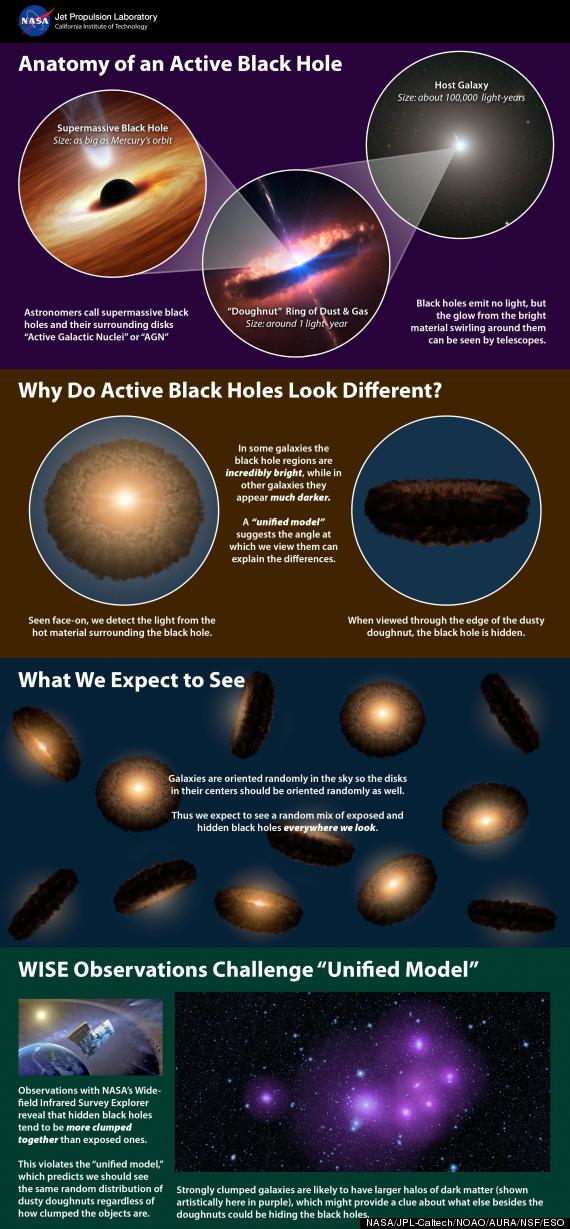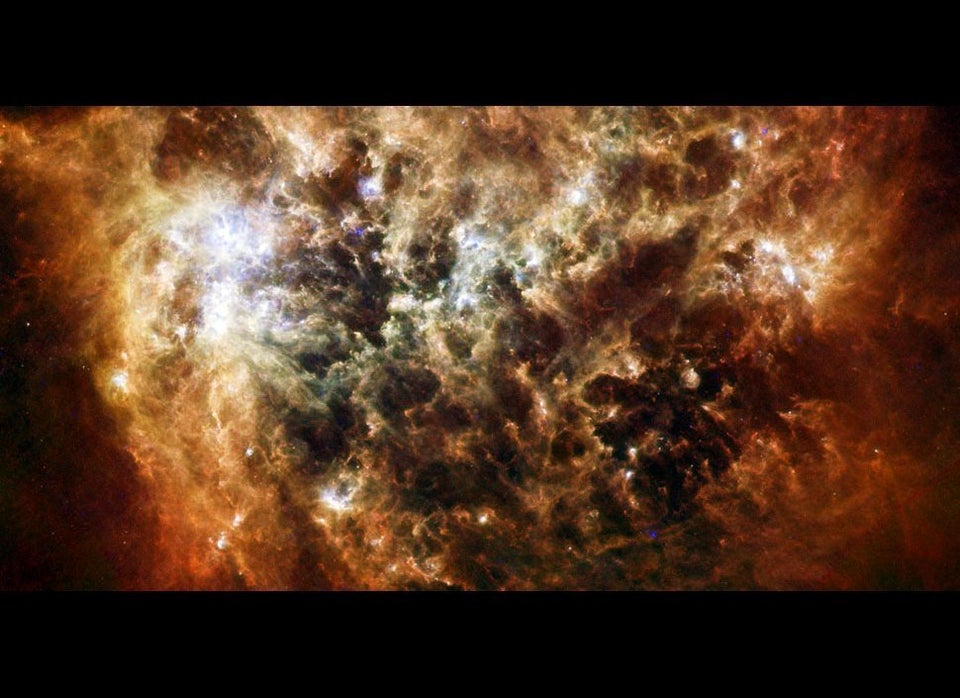
Why are some black holes hidden behind space dust? That's a complicated question -- but one astronomers thought they had figured out.
Now they're not so sure.
Black holes can't be spotted by the naked eye, of course, but their shape can be detected from the glow and heat released when gas falls into them -- this also indicates that a black hole is "active," because it basically gorges on surrounding gas material that fuels their growth. And astronomers believe that every galaxy has a black hole at its center.
At one time astronomers believed all black holes were surrounded by doughnut-shaped structures of thick dust. They thought that, depending upon their orientation and the angle at which they were viewed, these "toruses" could completely obscure some black holes.
According to this so-called "unified model" of black holes, all black holes are similar in nature -- and a black hole viewed edge-on might be obscured, while a black hole viewed face-on might be visible.
Now a study based on new observations made by NASA's Wide-Field Infrared Survey Explorer (WISE) space telescope suggests that something other than dusty "doughnuts" may determine whether a black hole is hidden.
"The unified theory was proposed to explain the complexity of what astronomers were seeing," study co-author Daniel Stern, a project scientist at NASA's Jet Propulsion Laboratory in Pasadena, Calif., said in a written statement. "It seems that simple model may have been too simple. As Einstein said, models should be made 'as simple as possible, but not simpler.'"
For the study, Stern and his colleagues analyzed 170,000 galaxies from the WISE data and then measured the extent to which those galaxies formed clusters. If the unified theory were true, the visible and "hidden" black holes at the galaxies' centers should be randomly distributed among the galaxies, whether or not the galaxies were clumped together. But the researchers found something unexpected: galaxies with hidden black holes are more clumped together than those with visible black holes.
(Story continues below)
 This infographic explains a popular theory of active supermassive black holes, referred to as the unified model -- and how new data from NASA's Wide-field Infrared Survey Explorer, or WISE, conflict with the model. Astronomers say the model could still be correct but needs adjusting to account for the unexpected observations by WISE.
This infographic explains a popular theory of active supermassive black holes, referred to as the unified model -- and how new data from NASA's Wide-field Infrared Survey Explorer, or WISE, conflict with the model. Astronomers say the model could still be correct but needs adjusting to account for the unexpected observations by WISE.
"Our finding revealed a new feature about active black holes we never knew before, yet the details remain a mystery," study co-author Lin Yan, a researcher at NASA's Infrared Processing and Analysis Center based at the California Institute of Technology in Pasadena, Calif., said in the written statement. "We hope our work will inspire future studies to better understand these fascinating objects."
The study has been accepted for publication in the Astrophysical Journal.

